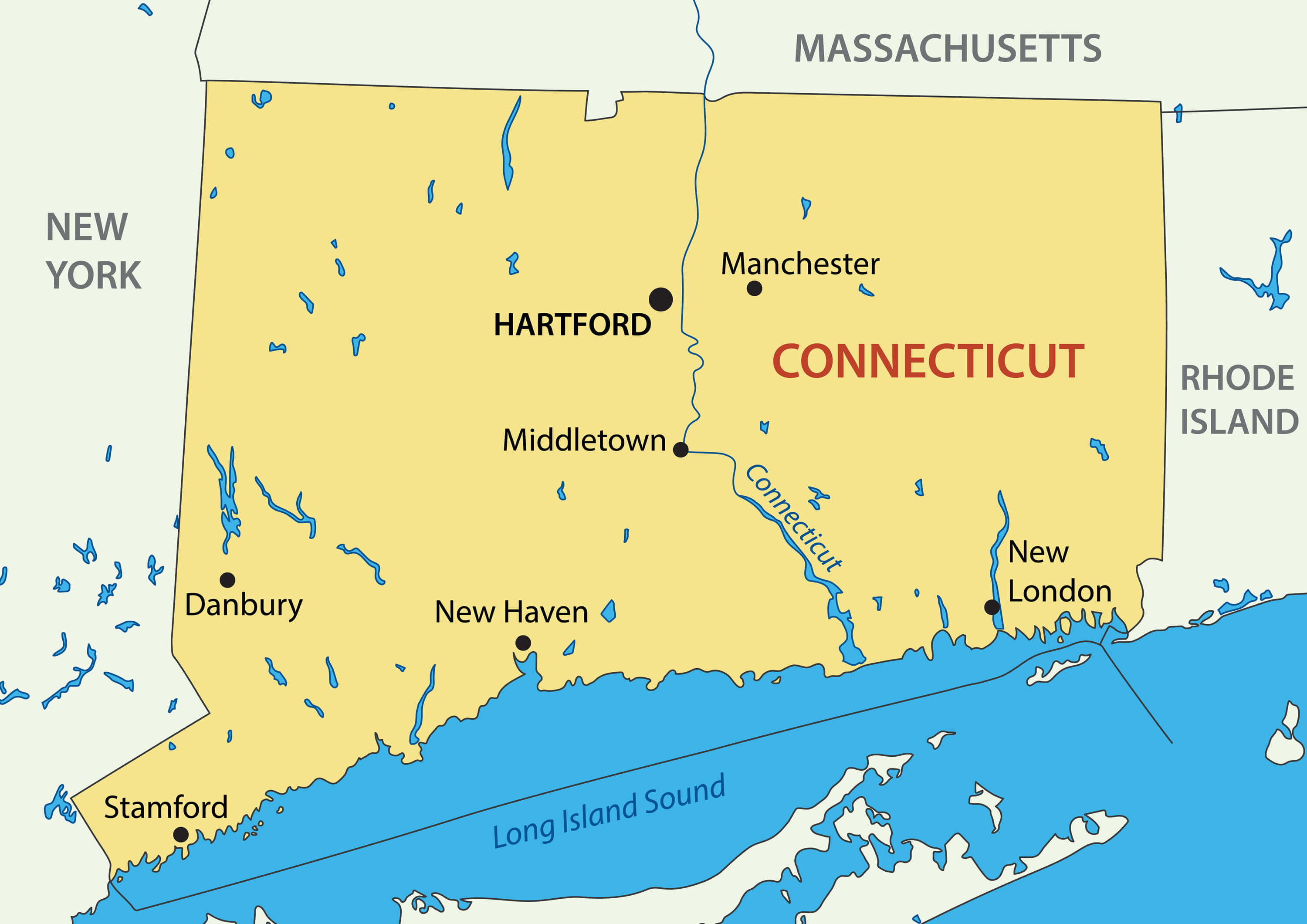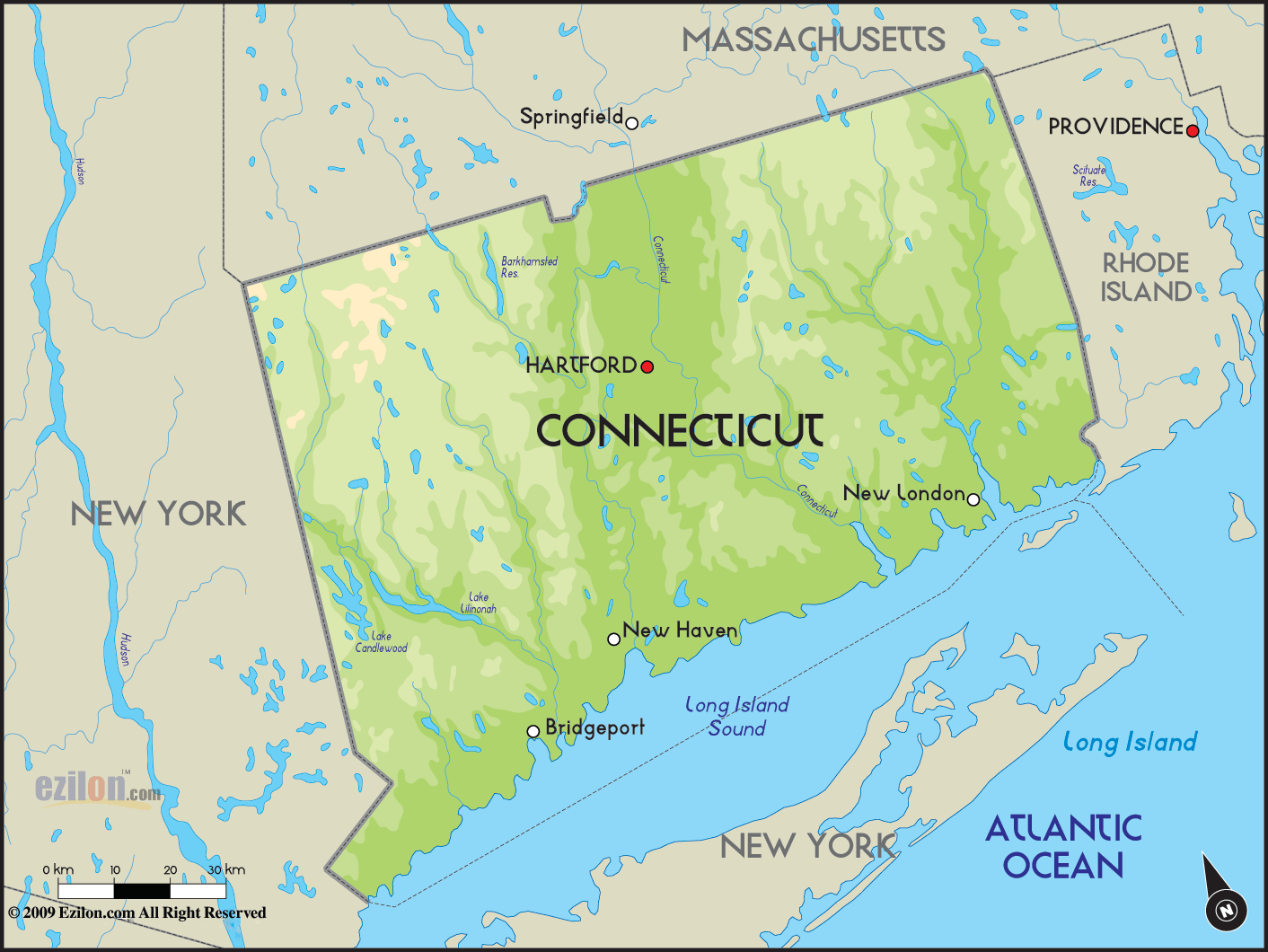
Echoes in the Stone: Connecticut’s Enduring Legends in the American Tapestry
America, a nation forged from diverse cultures, revolutionary ideals, and vast, untamed landscapes, is a land woven with tales. From the sun-baked deserts of the Southwest to the dense forests of the Pacific Northwest, every corner of this expansive country holds its own unique collection of legends – stories that transcend mere history, blurring the lines between fact and folklore, often revealing deeper truths about the human experience. These narratives, passed down through generations, are the cultural bedrock upon which local identities are built, reflecting fears, hopes, and an enduring fascination with the mysterious.
But nestled in New England, often overshadowed by its more boisterous neighbors like Massachusetts with its Pilgrim lore and witch trials, or New York with its urban myths and literary giants, Connecticut holds a distinct and potent collection of legends. This small, historically rich state, with its quaint towns, ancient burying grounds, and Revolutionary War battlefields, is a crucible of the uncanny, the heroic, and the haunting. From the earliest indigenous whispers to the chilling accounts of colonial witch accusations and the spectral echoes of its storied past, Connecticut’s legends offer a fascinating microcosm of the broader American mythos, inviting us to look beyond the ordinary and into the heart of its enduring mysteries.
Ancient Whispers: The Indigenous Roots

Long before European settlers cast their shadows upon its shores, Connecticut was home to vibrant Native American nations – the Pequot, Mohegan, Paugussett, and others. Their oral traditions formed the earliest layers of legend, deeply intertwined with the natural world. These were not just stories; they were spiritual guides, moral lessons, and explanations for the inexplicable. Legends of the Great Spirit, of powerful animal totems like the bear and the wolf, and of nature’s formidable forces shaped their understanding of the land.
The "Sleeping Giant," a distinctive ridgeline in Hamden, is a prime example. While geologically explained, local legends speak of Hobbomock, a giant spirit who, angered by the injustices inflicted upon his people, lies sleeping, ever watchful. His awakening, some say, would signal a time of reckoning. These tales, though often relegated to the background in popular culture, are the fundamental threads of Connecticut’s legendary tapestry, reminding us that the land itself has stories far older than any colonial settlement.
The Colonial Crucible: Witches in the Nutmeg State
Long before the infamous Salem witch trials cast their shadow over Massachusetts, Connecticut was grappling with its own chilling specter of accusations and executions. The Puritanical fervor that gripped early New England found fertile ground in Connecticut, where fear of the unknown, strict religious doctrine, and societal anxieties coalesced into a deadly paranoia.
It was in Windsor, in 1647, that Alse Young became the first person executed for witchcraft in the American colonies. This grim distinction predates Salem by nearly half a century, yet it often goes unmentioned in national narratives. Over the next five decades, Connecticut saw at least 30 individuals accused and 11 executed for witchcraft. Names like Mary Johnson of Wethersfield, who "confessed" under duress in 1648, and Lydia Gilbert of Windsor, executed in 1654, are etched into the state’s darker history.
These trials were less organized than Salem’s later spectacles but no less brutal. Accusations often stemmed from personal grievances, perceived misfortunes, or simply a woman not conforming to societal expectations. The fear was palpable, and the judicial process, often lacking due process as we understand it today, was swift and unforgiving. These events serve as a stark reminder of the dangers of mass hysteria and the vulnerability of marginalized individuals in a society gripped by fear, adding a profoundly human, and tragic, layer to Connecticut’s legendary past.
Revolutionary Echoes: Heroes, Traitors, and Enduring Spirits
The verdant landscapes of Connecticut bear the indelible marks of the American Revolution, and with it, stories of heroism, betrayal, and the enduring human spirit. Two figures, in particular, loom large in the state’s historical legends: Nathan Hale and Benedict Arnold.

Nathan Hale, a young Yale graduate and schoolteacher from Coventry, Connecticut, became an immortal symbol of patriotism. Captured by the British while spying for General George Washington, Hale uttered the immortal words, "I only regret that I have but one life to lose for my country," before being hanged in New York City in 1776. His story, though tragic, became an immediate legend, cementing his place as one of America’s first great martyrs. Statues of Hale grace courthouses and university campuses across the state, a constant reminder of his sacrifice and the ideals he represented. His legend speaks to the core American value of selfless devotion to freedom.
In stark contrast to Hale’s unwavering loyalty is Benedict Arnold, a native of Norwich, Connecticut, who began his military career as a hero but ultimately became the most infamous traitor in American history. Arnold’s early exploits, including his crucial role in the capture of Fort Ticonderoga and his bravery at the Battle of Saratoga, marked him as one of Washington’s most brilliant, if volatile, officers. Yet, perceived slights, financial woes, and a sense of betrayal led him to conspire with the British, attempting to surrender the vital West Point fortress. His defection sent shockwaves through the nascent nation. Arnold’s legend is a complex one, a cautionary tale of ambition, resentment, and the fine line between hero and villain, forever staining his Connecticut origins with the mark of infamy.
Spectral Residents: Ghosts and Haunted Places
Connecticut, with its centuries of history, is naturally a haven for spectral tales. Its old homes, forgotten battlefields, and ancient burying grounds are ripe for ghost stories, some of which have achieved national renown.
Union Cemetery in Easton, frequently cited as one of the most haunted cemeteries in America, is particularly renowned for its "White Lady." This ethereal figure, often described as wearing a white dress or gown, is said to glide silently through the tombstones, sometimes appearing in the nearby road, causing drivers to swerve. Witnesses, including local police officers and the famous paranormal investigators Ed and Lorraine Warren (who were based in Monroe, CT, and lent their credibility to many local hauntings), have reported encounters with her. The White Lady’s story is typically one of a woman tragically killed and now forever searching for her lost child or seeking justice. The sheer volume of consistent sightings over decades has solidified her status as one of Connecticut’s most enduring and terrifying legends.
Another chilling location is Dudleytown, an abandoned village nestled in the rugged hills of Cornwall. Known as the "Village of the Damned," Dudleytown’s legend speaks of a pervasive curse dating back to its founding families, particularly the Dudley family in England, some of whom were reportedly cursed or executed for treason. Settlers in the Connecticut hamlet faced an unending string of misfortunes: sudden deaths, madness, suicides, and mysterious disappearances. By the early 20th century, the last residents had fled, leaving behind ruins swallowed by the forest. Today, Dudleytown is private property, fiercely guarded against trespassers, a measure that only fuels its legend as a place so steeped in alleged misfortune and dark energy that it has earned its ominous moniker. Paranormal investigators and thrill-seekers have long been drawn to its eerie silence, reporting strange lights, disembodied voices, and an overwhelming sense of dread.
The Enduring Appeal of Legend
Why do these spectral figures and historical echoes continue to captivate us? The answer lies in the intrinsic human need for story, for meaning beyond the mundane. Legends, whether they speak of ancient spirits, colonial injustices, wartime heroism, or restless phantoms, serve multiple purposes. They offer moral lessons, explanations for the inexplicable, and a tangible connection to the past. They allow us to grapple with fear, to celebrate courage, and to confront the unknown in a way that is both safe and thrilling.
In Connecticut, these legends are not just historical footnotes; they are living narratives that contribute to the state’s unique identity. They are whispered around campfires, debated in local diners, and sought out by tourists and paranormal enthusiasts. They reflect a state that, despite its quiet demeanor, has witnessed profound moments in American history and continues to hold secrets beneath its placid surface. From the intellectual gravitas of Yale University to the maritime heritage of Mystic Seaport, Connecticut’s legends provide a counterpoint, reminding us that even in the most orderly of places, the extraordinary can lie just beneath the surface.
Conclusion
From the ancient murmurs of indigenous spirits to the chilling whispers of colonial accusations, from the heroic last words of a spy to the spectral cries of the restless dead, Connecticut’s legends form a rich and complex tapestry within the broader American narrative. They are a testament to the power of storytelling, the enduring human fascination with mystery, and the deep roots of history that continue to shape our present.
These tales are more than mere folklore; they are echoes in the stone, whispers in the wind, and shadows in the old burying grounds that remind us that the past is never truly gone. They invite us to explore, to question, and to remember that in every corner of America, and especially in a state as historically rich as Connecticut, the line between legend and reality is often delightfully, and terrifyingly, thin. To understand Connecticut’s legends is to understand a deeper, more mysterious facet of the American soul itself.


